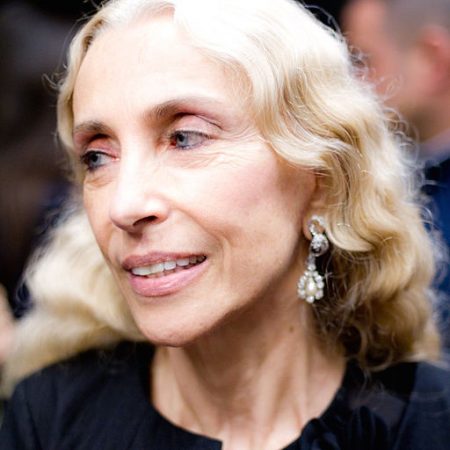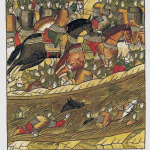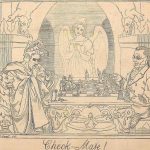
If you’ve been wondering how it happened that fashion spreads have turned into neo-modern tableaux vivants, the answer is probably Franca Sozzani, the late editor of Vogue Italia. Starting the 1980s, Franca took the fashion spread to new frontiers of weirdness and, oddly enough, social relevance. Formerly the province of fashion mavens and Italians, a recent documentary on Netflix, entitled “Franca: Chaos and Creation” makes it possible for all of us to appreciate her subversive genius for art and fashion.
Although her editorial style has been widely imitated, other mags don’t take it anywhere near as far as Franca did. They don’t need to to sell clothes. Franca was selling more than clothes. She was making statements that went far beyond the fashion industry. One series of shots shows attractively dressed models lying in attitudes of death along a stylized street, one girl draped artfully (and inertly) over a curb. Another features the same dead girls dressed in black leather and lace and dripping in what looks like petroleum along a blackened beach.
Rather than fight about whether a fashion magazine should be making statements about cosmetic surgery or environmental pollution, Franca denied that her content had anything to say at all. It’s just images, she would say. She liked them.
There is nothing particularly pretty about many of the fashion spreads she inspired of her photographers, but they grab your attention in a second. Her subjects are either dead or very much alive. They bristle with the energy of youth and collapse under its ennui. With Franca, everything must be new because the second anything is born it’s old, and it’s time to make a new thing. She claims to watch life unfold just as it comes, and works within that moment. To put it another way, the future is only as far as the next issue.
Franca refers to the fashion industry as a facet of the spectacle. She is very prescient in doing so, for it was that insight that enabled her to jump ahead of the less forward thinking into the very essence of now, a now which is spectacular in the truest sense of the word. Everything is huge! massive! a crisis! replaceable by other huge crises as interest in previous crises wanes. We wander from crisis to crisis as if there were no other way to live. Franca knows how to spend that coin, and although her work borders on hyperbole, that’s part of what makes it effective. There is an epic quality to her best spreads, like an over-the-top production number in a Hollywood musical or the finale of a very well played symphony. These photos stop you in your tracks. It didn’t hurt that she worked with some of the world’s best photographers.
At one point in the “Chaos and Creation,” Franca’s son declared her to be a non-genius who knew how to pick geniuses. His mother objected — “how do you know I’m not a genius?” she asks, and then, “it takes one to know one.” She’s plenty egotistical, but it’s hard to argue against her unrivaled talent for design. Moreover, in the contemporary art world, it’s not uncommon for an artist to be entirely hands off, acting as the director rather than creator, while teams of workers execute his ideas. This is true of Franca who envisioned, commissioned, nurtured, managed, and ultimately arranged those iconic photos into a magazine that was as influential as it was coveted.
It’s time we stopped pretending fashion isn’t art. It is, and all the more so in these hypercommercial times when almost everything that can be has been co-opted by corporate money and interests. Art is now firmly in the commercial sphere. Franca’s work is no different, but she takes it to another level, transcending the commercial to show us what lies within the dark heart of the spectacle she documents so well.
Photo by Sara Cimino from Milan, Italy (Flickr account) – Flickr, CC BY 2.0




